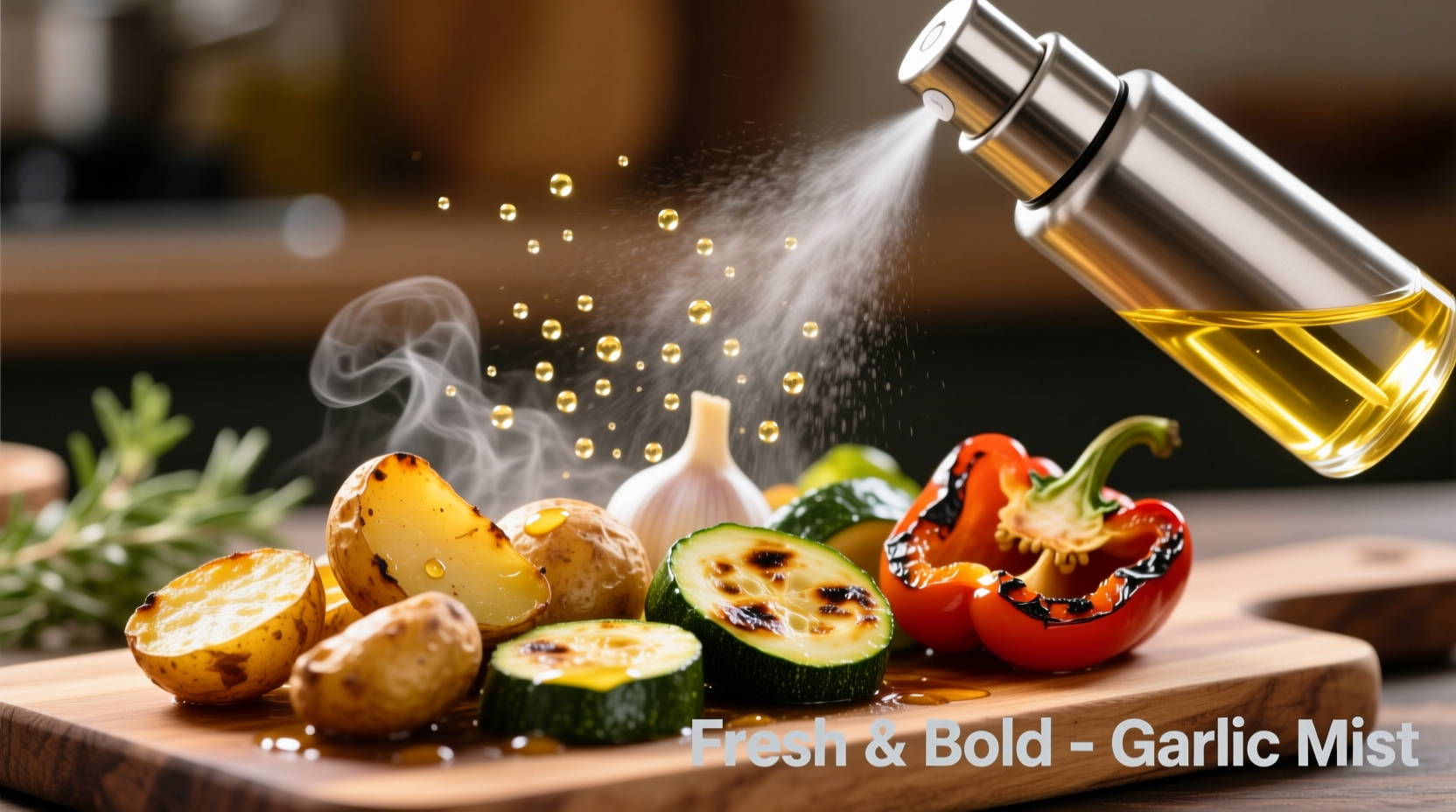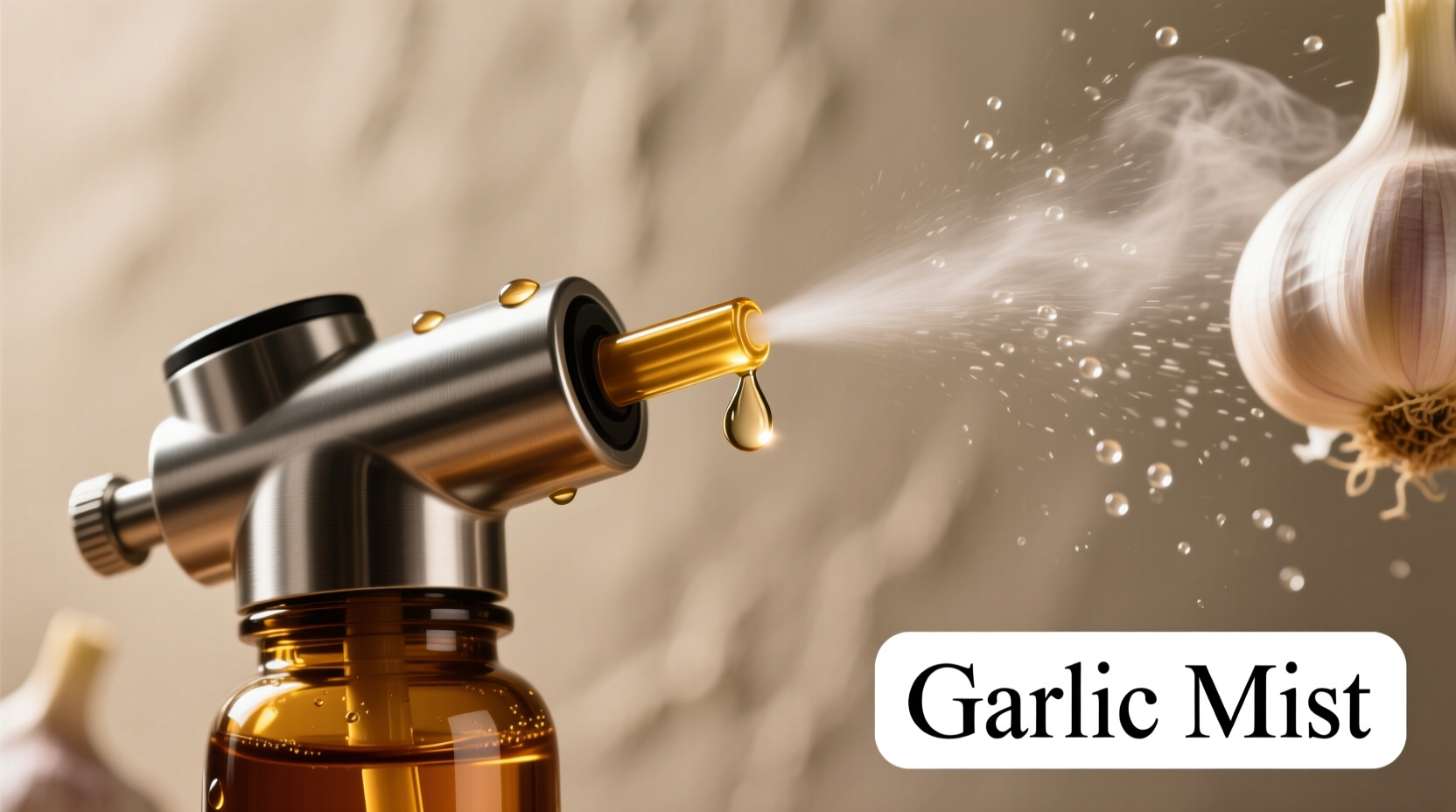Spray garlic delivers concentrated garlic flavor without chopping or mincing, offering precise control for sauces, marinades, and finishing dishes. It preserves allicin (garlic's active compound) longer than pre-minced alternatives while eliminating waste and reducing cleanup.
Why Spray Garlic Is Changing Home Cooking
For decades, home cooks faced a dilemma: use fresh garlic for maximum flavor but deal with tedious prep and inconsistent results, or opt for convenience products that lacked depth. Spray garlic bridges this gap by delivering consistent, measured garlic flavor with scientific precision. Unlike jarred minced garlic that loses potency within hours, spray formulations maintain allicin stability through controlled oxidation prevention.
The Science Behind the Spray
When garlic cloves are damaged through cutting or crushing, the enzyme alliinase converts alliin into allicin—the compound responsible for garlic's characteristic flavor and health benefits. Traditional pre-minced garlic begins degrading immediately after preparation, losing up to 60% of its allicin within six hours according to National Center for Biotechnology Information research.
Spray garlic technology solves this through micro-encapsulation. The active compounds are suspended in a protective oil base that only releases flavor upon contact with food surfaces. This maintains potency for up to 18 months when stored properly—significantly longer than fresh alternatives.

Practical Applications in Your Kitchen
Professional chefs have quietly used spray garlic for years in high-volume kitchens. Now home cooks can leverage these same techniques:
Perfect Sauce Integration
Add precise garlic notes to delicate sauces without texture disruption. For hollandaise or béchamel, spray directly into the emulsion while whisking—no risk of burnt garlic bits. Start with 2-3 sprays per cup of sauce and adjust to taste.
Marinade Mastery
Spray garlic penetrates proteins more evenly than minced alternatives. For chicken or fish, spray directly onto the surface before adding oil—this creates better adhesion than traditional methods. The fine mist reaches crevices that chopped garlic misses.
Finishing Touches
Unlike cooked garlic, spray application right before serving delivers vibrant, fresh garlic notes. Mist over finished pasta dishes, roasted vegetables, or grilled meats for an aromatic boost that mimics freshly minced garlic without the raw bite.
| Garlic Form | Allicin Stability | Prep Time | Flavor Control | Waste Factor |
|---|---|---|---|---|
| Fresh cloves | 2-6 hours | 3-5 minutes | Variable | 15-20% |
| Pre-minced (jarred) | 4-12 hours | 30 seconds | Moderate | 5-10% |
| Spray garlic | 12-18 months | 5 seconds | Precise | Negligible |
When Spray Garlic Outperforms Traditional Methods
Certain cooking scenarios particularly benefit from spray technology:
- Temperature-sensitive dishes: Add garlic flavor to cold soups like gazpacho without cooking
- Texture-critical applications: Flavor delicate fish without breaking flesh with minced pieces
- Batch cooking: Achieve identical garlic levels across multiple portions
- Allergy management: Prevent cross-contamination in shared kitchens
Limitations to Consider
Spray garlic isn't universally superior. Understanding its boundaries prevents culinary missteps:
For dishes requiring caramelized garlic notes (like aglio e olio), fresh garlic still provides superior flavor development through the Maillard reaction. The spray format can't replicate the complex compounds created when garlic browns in oil. Similarly, when making garlic confit or roasted garlic spread, the whole-clove transformation process creates unique textures and flavors that sprays can't mimic.
Storage matters significantly—keep spray garlic in a cool, dark place and avoid temperature fluctuations. Exposure to heat above 75°F (24°C) accelerates degradation of the active compounds according to USDA Agricultural Research Service data.
Professional Techniques for Home Use
Adopt these chef-tested methods to maximize spray garlic's potential:
- The Layering Method: Spray in stages during cooking—initial base flavor, mid-cook enhancement, and final aromatic boost
- Dilution Control: Mix with citrus juice or vinegar before spraying for acid-balanced applications
- Temperature Matching: Warm the bottle in your hands before use for better dispersion in hot dishes
- Cross-Contamination Prevention: Dedicate one spray bottle for vegetarian dishes and another for meat preparations
For optimal results, shake well before each use and store upright. The oil base may separate during storage—a normal occurrence that doesn't affect quality. Most quality brands maintain potency for 18 months unopened and 6 months after first use when stored properly.
Making the Right Choice for Your Kitchen
Spray garlic works best as part of a comprehensive garlic strategy rather than a complete replacement. Maintain fresh garlic for dishes requiring texture and deep caramelization, while keeping spray garlic for precision applications and quick meals. The ideal home kitchen stocks both forms to handle any culinary scenario.
When selecting a product, check for pure garlic extract without artificial preservatives. Quality sprays list only garlic and carrier oil (typically sunflower or olive oil) in their ingredients. Avoid products containing citric acid or sulfites, which indicate attempts to artificially extend shelf life at the expense of flavor quality.











 浙公网安备
33010002000092号
浙公网安备
33010002000092号 浙B2-20120091-4
浙B2-20120091-4